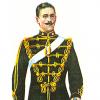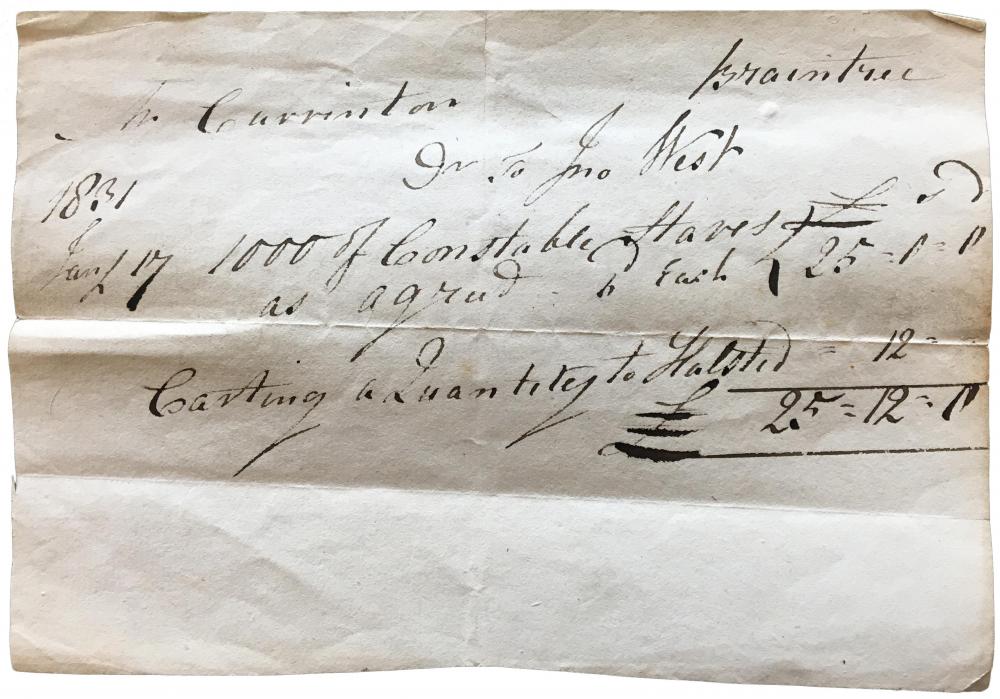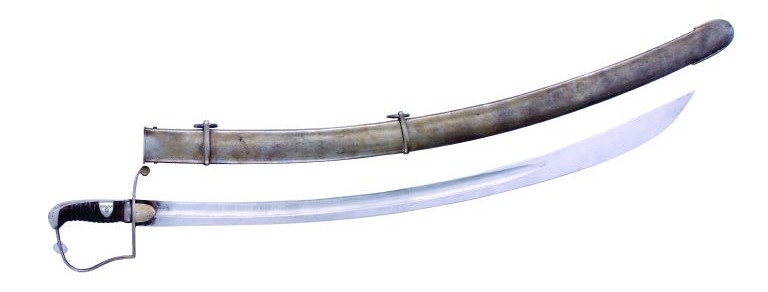-
Posts
15 -
Joined
-
Last visited
Profile Information
-
Location
Essex
Recent Profile Visitors
Alan.Cook's Achievements
-
This example is stamped 'PARKER 233 HOLBORN'. Truncheons marked as such were produced by Parker Field & Sons. They continued to operate from the Holborn address until 1877. This example has the WD and arrow stamp which has been overstamped with 'S / 272'. I presume the divisional letter 'S' means this was probably used by the Met Police. I am aware the Met Police often sent equipment to the Board of Ordnance for quality assurance purposes who would have applied the WD mark. The reverse is stamped with the makers name 'G & W Almond'. Not much to say about this one other than it came to me from a great police collector Fred Wilkinson.
-
Mike, I can't say rattles have been the top of my wants list, but if I was going to buy one then for me this would be it. The Field stamp with address, plus the label make this really interesting. One wonders what the full instructions were as I had never thought of it as a difficult piece of equipment to operate. I do have some - sadly packed away as I found them difficult to display - I think are worth getting out for a reappraisal. Here is my first offering on the subject. This example has wonderful patination is very tactile. It is stamped on the front 'PARKER HOLBORN' in a circle similar manner to the way they stamped truncheons. When dating truncheons this stamp would be attributed to William Parker and be pre- 1841.
-
As ever with best intentions, I don't seem to log into the GMIC as often as I should. Having read the latest additions to this thread I thought I would add a comment regarding Hatton Garden truncheons. This example is a rare survivor. The example I show in my book - numbered '3' - came into my possession in 1991 and since then I have only ever seen 3 or 4 others (including the recent discovery). There was a fine example in Fred Wilkinson's book 'Those Entrusted with Arms' numbered 65. Fred was a great collector of London Public Office pieces and I have been very lucky to now own many pieces which were once in his collection, including the POHG truncheon. The example illustrated in Dicken's book was sold at Bonhams in 2011 (see page 28 of my book). It was sold along with all the other Public Office truncheons shown in Dicken. Again, I was lucky enough to buy the other examples, but could not justify the POHG, which sold for a very good price. Along with the recent example I believe there may have been one other sold at auction, but I am hazy on the facts. The common feature of each example is that they were all stamped with the crown MP mark. Dicken suggests this was added when the Met took over the Public Offices and was used to show transfer of ownership. This sounds plausible and it does seem likely that the stamp was added early on in the Met timeline and is therefore an early mark. The mark can also be seen on other different styles of Hatton Garden truncheon. In my researches I have now seen a few William Parker invoices for truncheons and the type with the mellow yellow handles as seen in the Hatton Garden truncheons are always listed as being made of lance wood. My view would be that these Parker examples for Hatton Garden were produced right at the end of time of the Office. They are also notable as being the only Public Office truncheons produced by Parker. On this point, you do sometimes see Parker Field tipstaves purporting to be engraved with details of Public Offices, however, the dates of the tipstaves (post 1841) makes them too late to be genuine. In relation to the numbers, here is a thought; if my assertions are correct and these POHG truncheons by Parker date to just before the era of the Met it is possible they may have been produced for use by special constables. I have recently been researching the history of special constables within Essex. While the concept of specials had been around for many years it was not until 1830 (in Essex) they were used in any meaningful way. Due to the threat of the Swing Riots, which were spreading across the county in the last couple of months of 1830 Essex enrolled several thousand specials. These specials required staves (they tended not to use the term truncheon very often) and there are bills in the Essex Record Office from suppliers all over the county for the supply of staves. Combined these add up to over 4,000!!! One supplier in the Braintree area was commissioned to produce 1,000 (see image). Parker did produce some of the truncheons required in Essex at this time for Epping and Nazing. Further research may shed further light on the POHG truncheons; from my recent studies it is amazing what information is still out there waiting to be discovered. Before I sign off I thought I would add a comment re my latest book. 'Policing from Bow Street' is a joint effort with a friend of mine, Peter Kennison. It covers the history of Bow Street from its earliest days up to the time it was taken over by the Met. There are lists of officers who formed some of the patroles and there is a section on equipment, which does include truncheons. The book is still available and is currently being reprinted. Should anyone have a problem getting a copy please do not hesitate to contact me direct.
-
.jpg.6f1c6ae97563d43612c363d000a1775b.thumb.jpg.3f9782424cc924e570a7e4a372093dba.jpg)
Early tipstaves
Alan.Cook replied to septimus007's topic in Great Britain: Mervyn Mitton's British & Colonial Police Forces
While most of the tipstaves we are used to seeing tend to have a bulbous handles example such as this are also well known. It is; however, fairly unusual to see three at once. I agree with collector in the USA that there are definitely no issues with the first two. I think the problem with the third piece is that overall it is not a pretty example and the proportions do not feel right. That said on balance I would say it is genuine as the handle appears to be integral to the piece and you don't normally fine fakers making up such elaborate metal work. The real issue with faked tipstaves is engraved decoration such as the Bow Street example mentioned earlier. This is not the first time this piece has been offered at auction over the past few years. I have looked closely at it and while wanting it to be genuine just don't know. I wouldn't try and put anyone off buying it as you will find no one who can say for certain if it is genuine or fake. -
.jpg.6f1c6ae97563d43612c363d000a1775b.thumb.jpg.3f9782424cc924e570a7e4a372093dba.jpg)
Early tipstaves
Alan.Cook replied to septimus007's topic in Great Britain: Mervyn Mitton's British & Colonial Police Forces
In responding to this post I am not sure I can add much more than has already been said by 'CollectorInTheUSA' as his comments are sound. To deal with the main question first raised I would suggest using any photo of a plain tipstaff (i.e. metal crown and barrel with a turned wood handle) of which there are many available on the website. You hear phrases such as 'a generic style of Bow Street tipstaff', but in my experience there is no such thing, and herein lies the problem when identifying genuine pieces. Bow Street, above all other places, has long held a fascination with those interested in the history of policing. This has, I am sure, encouraged people to embellish plain, but genuine, items with engraving to confuse the unsuspecting collector/historian. To add a little with regard to the published examples I would comment as follows. The black and white example illustrated by Mitton is attributed to Jonathan Wilde (not a 'Runner'), and is said to be similar to an example belonging to John Townsend (probably the most well known 'Runner), and is from the collection kept, until recently, at Bramshill House. The Bramshill collection is widely regarded as one of the most important ever put together. In fact the bulk of the collection is made up from two main endowments made in the mid 20th century. The background information on pieces is scant, which means we need to approach the collection with an enquiring mind. The is another example in Mitton (page 69) which is engraved 'Public Office Bow Street' and to all appearance appears to be genuine (also illustrated in Fenn Clark). In mentioning Fenn Clark he shows a 'Runners' tipstaff held in the Canterbury Museum, but again enquires with this museum cannot prove this attribution. The simple fact is time and some unscrupulous persons have made it very difficult for us to determine the fake from the genuine. The Birchall example mentioned in the earlier post is in my collection, and in my book I give details of its provenance. In my opinion you need to be able to trace a piece at least back to the 1960/70's (and if possible earlier) to be reasonably confident about engraving. In this way you avoid the 1980's which was a terrible period for the faking of engraving on tipstaves. In a sad twist this was in some ways brought about by the resurgence of interest in these items brought about by Mitton, including the publishing of his book. Tipstaves were making top money in those days, reaching prices you would struggle to get today. -
.jpg.6f1c6ae97563d43612c363d000a1775b.thumb.jpg.3f9782424cc924e570a7e4a372093dba.jpg)
Unknown Truncheon
Alan.Cook replied to Anthony03's topic in Great Britain: Mervyn Mitton's British & Colonial Police Forces
Hi, I think the honest answer with regard to any plan wood truncheon is that unless they start to talk we will never know. What we can say is this is not the traditional style used in the UK. However, it could have been a one-off bespoke item. We also know that collar numbers do not reach this high in UK forces, with the exception of members of the Special Constabulary. Some forces used to have a means of separating regular officers and Specials. One way of doing this was to have SC collar numbers which start at higher numbers such as the 5,000s. I doubt this was Plymouth City, but could have been Devon and Cornwall - Special Constabulary? My knowledge of American items is not great so Mike's suggestion is also worthy of consideration. -
.jpg.6f1c6ae97563d43612c363d000a1775b.thumb.jpg.3f9782424cc924e570a7e4a372093dba.jpg)
Truncheon Auction
Alan.Cook replied to Nightbreak's topic in Great Britain: Mervyn Mitton's British & Colonial Police Forces
An interesting auction, but sadly in my humble opinion there were a number of fakes being sold. I was contacted by a number of collectors before hand and was able to advise them on their bidding. If you have read my book (Appendix 7 - Fakes and Pitfalls) you will understand why this was an important auction, but sadly for all the wrong reasons. My assessment is this was a collection built up in the 80's, which has not been on the market since that time. Don't get me wrong, I hate this sort of thing as it spreads confusion and doubt over items I have spend nearly 30 years studying. What I want to see is new collectors to the hobby who can buy with confidence. If anyone has any specific questions they wish to ask about items they can always contact me through my website truncheon.org.uk. -
As requested I'm pleased to share a photo of the armband and sword. This is to my knowledge the only example of a Horse Patrol armband. The royal arms are difficult to determine, but do appear to have the central escutcheon, which would date the armband as being pre 1837. As the Horse Patrol was not reinstated until 1805 it probably dates between 1805 and 1837. I am currently in the process of researching information for a book on the Bow Street Patroles (old spelling), so any information about this piece would be most welcome. I have not yet found any record of the Patrole being issued with armbands, but am happy to with this attribution, unless anyone can tell me something different. The sword is the 1796 light cavalry pattern with 'W. PARKER MAKER TO HIS MAJESTY, HOLBORN, LONDON' down one side and 'HORSE PATROL NO 55' down the other. If you look carefully at the hilt, you will notice a small circular metal disc. This is an exhibition label from the Tower of London. This along with a number of other early police items were previously loaned to the Royal Armouries and were displayed in the White Tower for a number of years. Back in the 90's I visited the White Tower and took photos of the items while on display. Never did I dream that one day I would own them.
-
I concur with Dave about Scott Giles' book and used this as my mainstay for many years. Civic and Corporate Heraldry published in 1971 by the Heraldry Society is also useful. The issue comes when the arms are personal rather than civic. In my early days of collecting I did pay for proper research from the College of Arms, but this is very expensive. Fortunately I have now made some good contacts, who help me out as a favour. The other problem is painters often used a lot a licence and you do find arms, which are just wrong, which is not helpful. When arms are used on truncheons they normal relate to larger towns and cities so it does not take long to become acquainted with the more common ones. You may have come across pieces of crested china in the past and there is a good book called The Price Guide to Arms and Decorations on Goss China. Again I have found this helpful. One piece of advice I would offer, is always follow leads up and do your own research. I love my Fenn Clark, Dicken and Mitton truncheon reference books, but they do contain errors (as does my own book so I'm not trying to cast stones). In some instances the town 'seal' was used rather than the full arms, which can be problematic. The above image appears on an item, which I had seen go through a number of dealers before ending up in my collection. It is painted on a square headed West Country style piece and everyone thought it was an image of the constable. It is actual a representation of the seal of the borough of Penryn. The full description is a man in profile, couped at the breast, vested over the shoulder, and wreathed about the temples with laurel, tied behind with two ribbons flotant. Heraldry is a fascinating study and good luck with you research.
-
Mike, I'm sure you have researched this, but when dating the rattles in your post no one seems to have mentioned the makes name 'FIELD 59 LEMAN ST', which is shown on the smaller example (I think). The stamp is for the firm Parker Field & Sons, who were formed in 1841. The address stamped on this piece dates it between 1877 and 1879. The 'R 926' stamp al; most certainly means it was a Met Police issue. What I particular like is that rather than being early, it is in fact a late example just before the introduction of whistles. A great item. Alan
-
.jpg.6f1c6ae97563d43612c363d000a1775b.thumb.jpg.3f9782424cc924e570a7e4a372093dba.jpg)
White Duty Helmets
Alan.Cook replied to Craig's topic in Great Britain: Mervyn Mitton's British & Colonial Police Forces
It been a tough week! -
.jpg.6f1c6ae97563d43612c363d000a1775b.thumb.jpg.3f9782424cc924e570a7e4a372093dba.jpg)
White Duty Helmets
Alan.Cook replied to Craig's topic in Great Britain: Mervyn Mitton's British & Colonial Police Forces
I was interested to see to see a Southend-on-Sea white helmet in one of the GMIC threads. These were introduced in 1962 following experiments with white silk covers worn over a traditional blue helmets. Southend Constabulary was amalgamated with Essex County Constabulary in 1969 and became the Essex & Southend Joint Constabulary. Until this time Essex had always issued a traditional rose top helmet, but on amalgamation took on the coxcomb style, keeping the shell at the top. The shell was retained in 1974 when the Force became Essex Police. Recently I decided to apply to the College of Arms for a grant of arms, which can be seen in my profile. As a serving Essex officer I wanted to allude to my career in the design. My final inspiration was the shell used on the helmet, which is unique to Essex. I therefore have three escallops applied to a chevron. The escallops are blue, which can allude to policing, but also the sea as Essex has the longest coastline of any county in the UK. The reason there are three is in allusion to my rank, chief inspector. -
Mike, sad news about Mervyn. I was interested to see your City truncheon. Like you I have often pondered the letters on truncheons and sadly in many cases never can find a plausible answer. I think you are on the right track with the W mending ward and following that line Coleman Street Ward does not seem improbable. I think the P is more difficult and doubt we will ever know for certain. If I was forced to make a comment I think go for the obvious such as Police. I don't think it would be Portreeve and Precinct is too American. If anyone is thinking about collecting truncheons I would recommend they take attributions with a large pinch of salt. Over nearly 30 year of collecting I have seen many wild guesses put forward as definitive answers. This has come from both dealers and collectors alike. I think this also applies to reference works such as Fenn Clark, which rarely ever contain reference notes, or make use of phrases such as 'may - could - possibly'. At one of the first auctions I ever went to I saw a Parker truncheon with the letters 'HMRT' in a cartouche. A short time later it had a very inflated price and was being sold as 'Her Majesty's Royal Train'. I had the chance to speak to the dealer at the time who even lied as to how he came by the item, which was shameless. With regard to numbers the only comments I normally offer are: 1) It is probably a stock or armoury number rather than a collar/warrant number. 2) If the number is high it probably, but not always, relates to the Special Constabulary. Ultimately what we do know is you have a good City truncheon, so well done.
-
Alan.Cook changed their profile photo
-
I was fascinated to read this thread as I was the purchaser of the sword and armband at the 2006 Del Mar auction. I also had the privilege of knowing the previous owner who sold these, along with many other rare items at the auction. If anyone is interested the armband was also illustrated in the excellent book 'Those Entrusted with Arms' by Frederick Wilkinson. It is worth noting that the 1796 pattern sword, is just that, a pattern, which was used for many years and probably dates from 1805 when the patrol was re-formed. Wilkinson made a specialist study of items relating to the London Public, or Police, Offices and in my view knows more about this subject than most others I have ever encountered.
-
.jpg.6f1c6ae97563d43612c363d000a1775b.thumb.jpg.3f9782424cc924e570a7e4a372093dba.jpg)
Mervyn Mitton
Alan.Cook replied to Craig's topic in Great Britain: Mervyn Mitton's British & Colonial Police Forces
It was after receiving a copy of Mitton's book 'A Policeman's Lot' in the late 1980's that I was inspired to start collecting decorated truncheons. Little did I know where this gift was to lead. I met Mervyn at his home in Bournemouth a few year's ago on what I think was his last trip to the UK. Although the bulk of his truncheons had been sold I was still extremely lucky to walk away with some choice pieces, which I still treasure. Like some others, I can't say we always reached the same conclusion on pieces, but he did have an amazing collection and knowledge. I like to think I gave him due credit when I published my own tome on the subject last year, and that our books complement each other in their very different styles. Trying to follow in his footsteps on a subject so close to his heart was always going to be a challenge, and I still don't think truncheons and tipstaves are cherished by the collecting world as they should be. His passing represents the closing of a chapter on this topic and others now need to make sure they take up the challenge and build on what he started.







